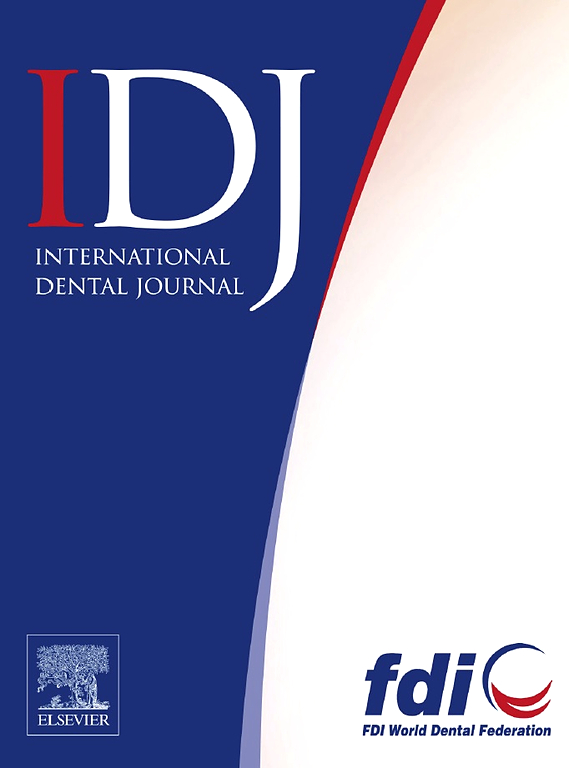VPA Enhances Pulp Regeneration by Regulating LPS-Induced Human Dental Pulp Stem Cells Odontogenic Differentiation
IF 3.2
3区 医学
Q1 DENTISTRY, ORAL SURGERY & MEDICINE
引用次数: 0
Abstract
Aim
This study aimed to investigate the effect of valproic acid (VPA) exposure on pulp inflammation and regeneration.
Methods
The effects of VPA on pulp regeneration and reparative dentin formation were examined using cone-beam computed tomography (CBCT) and histological staining in vivo after 3 months of endodontic regenerative procedures (ERPs). In vitro, the effect of VPA on the odontogenic differentiation of human dental pulp stem cells (hDPSCs) was assessed using mineralization assays following lipopolysaccharide (LPS) exposure. Western blotting, quantitative real-time polymerase chain reaction, and reverse transcriptase polymerase chain reaction were performed to analyze changes in gene and transcript expression. Mineralization and transfection assays were conducted to evaluate the roles of histone deacetylase (HDAC)2 and HDAC5.
Results
Three months post-ERPs, CBCT imaging revealed well-sealed crowns and normal root apices with no apparent periapical lesions in all groups. The hDPSCs+VPA group exhibited a greater presence of neoformed connective tissues, dentin-like tissues and odontoblast-like cells compared to the hDPSCs group. Furthermore, mineralization assays demonstrated that VPA enhanced LPS-induced odontoblastic differentiation. In particular, during this process, VPA significantly downregulated the expression of HDAC2 and HDAC5 in hDPSCs treated with VPA and LPS, HDAC2 knockdown reduced odontoblastic protein production and the calcified nodules formation, while HDAC5 inhibition promoted odontoblastic differentiation in hDPSCs. Overexpression of HDAC2 or HDAC5 in the presence of VPA and LPS played the opposite role during the odontoblastic differentiation of hDPSCs.
Conclusions
This study demonstrated that VPA improved pulp regeneration by regulating LPS-induced odontogenic differentiation of hDPSCs, primarily through modulation of HDAC2 and HDAC5 activity.
Clinical Relevance
These data demonstrate that VPA is a highly effective pharmacological candidate for dental pulp maintenance and regeneration, highlighting its clinical significance in restorative dentistry.
VPA通过调节脂多糖诱导的人牙髓干细胞成牙分化促进牙髓再生
目的探讨丙戊酸(VPA)对牙髓炎症及再生的影响。方法采用锥形束计算机断层扫描(CBCT)和组织染色观察VPA对牙髓再生和修复性牙本质形成的影响。在体外,利用矿化法评估VPA对人牙髓干细胞(hDPSCs)成牙分化的影响。采用Western blotting、定量实时聚合酶链反应和逆转录酶链反应分析基因和转录物表达的变化。通过矿化和转染试验评估组蛋白去乙酰化酶(HDAC)2和HDAC5的作用。结果erps后3个月,CBCT显示各组牙冠密封良好,根尖正常,无明显根尖周病变。与hDPSCs组相比,hDPSCs+VPA组显示出更多新形成的结缔组织、牙本质样组织和成牙细胞样细胞的存在。此外,矿化实验表明VPA增强了lps诱导的成牙细胞分化。特别是在这一过程中,VPA显著下调了VPA和LPS处理的hDPSCs中HDAC2和HDAC5的表达,HDAC2的下调减少了成牙细胞蛋白的产生和钙化结节的形成,而HDAC5的抑制促进了hDPSCs的成牙细胞分化。在VPA和LPS存在的情况下,HDAC2或HDAC5的过表达在hdpsc的成牙细胞分化过程中发挥相反的作用。结论VPA主要通过调控HDAC2和HDAC5活性,通过lps诱导的hdpsc成牙分化促进牙髓再生。这些数据表明VPA是一种非常有效的牙髓维持和再生药理候选药物,突出了其在修复性牙科中的临床意义。
本文章由计算机程序翻译,如有差异,请以英文原文为准。
求助全文
约1分钟内获得全文
求助全文
来源期刊

International dental journal
医学-牙科与口腔外科
CiteScore
4.80
自引率
6.10%
发文量
159
审稿时长
63 days
期刊介绍:
The International Dental Journal features peer-reviewed, scientific articles relevant to international oral health issues, as well as practical, informative articles aimed at clinicians.
 求助内容:
求助内容: 应助结果提醒方式:
应助结果提醒方式:


